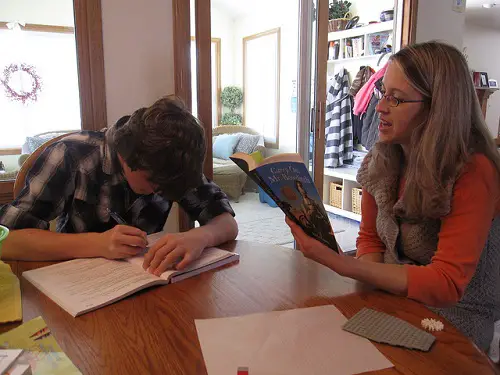
There are many similarities between educators and teachers. Indeed, there is also a ton of overlap in that many teachers are educators and many educators are teachers. And in many cases, the two terms can be considered synonymous. However, there are some small variations in the roles each plays and when the term is appropriate to use.
-
Role
Perhaps the biggest difference in the two terms is the fact that an educator could be anyone who gives instructions, whereas a teacher is a job title to describe someone who teaches at a school. An educator could also be someone who acts as a mentor, and instructor or even a trainer. A teacher is someone who is in the teaching profession. They get paid and often require special training or formal qualifications, which is something that is not required of all educators but would depend on the type of educator and the content.[i] The difference between the two may be thought of as formal and informal also. Informally, when a teaching role is taken on by anyone, that would be more likely to be considered an educator. But when it takes place in a formal setting, with paid professional teachers, it would be more likely to be called teaching. In settings that are informal, but still require the same degree of teaching (such as homeschooling), both terms can be used accurately.[ii]
-
Function
An educator educates students and a teacher teaches students. This may seem like the same thing, but an educator does not simply teach, but can also give intellectual, moral and social instruction. The scope and depth of education that can be provided by an educator can be much broader than a teacher because their focus is on overall development and progress for the student. This often requires that the educator evaluate progress individually and adjust the material to fit the student’s needs. This is in contrast to a professional, paid teacher who will primarily focus on the pre-defined curriculum and syllabus for the term. This is what is taught to the entire class, regardless of their individual needs.[iii]
-
Material
To become a teacher, an individual typically has to gain special training or receive some formal qualification. This is because the content that is taught deals with imparting theoretical knowledge such as theories, formulas and other information. Additionally, they teach how to apply the knowledge in a practical manner. While the same duties may be performed by an educator, depending on the content that they are covering, an educator will also provide intellectual, moral and social instructions rather than a simple practical application. This involves tying the information to a broader context than a teacher would.[iv]
-
Characteristics
There are also certain qualities and characteristic that differentiate an educator from a teacher. With teaching, the individual teachers are expected to follow clear standards of practice that address the ongoing education of teachers, investigating any complaints and conducting hearings into allegations of professional misconduct. They must also take appropriate disciplinary action and deal with accreditation through teacher education programs. There is also an inherent obligation to honor students’ rights.[v]
Informal education also has prescribed characteristics that help to define it. It seeks to create or deepen situations where people can learn or provide an environment where everyone can learn together building upon each other’s ideas. Informal education also understands that an activity can be based on any form of learning (the teaching does not have to be deliberate, but can be implied) and focuses on social and collaborative aspects of learning. At times, informal education can help to bridge the gap between school and life and it allows the students a choice in how to approach and learn the material. Students are also given the tools that are tangible for the processes in which they apply to. Informal education can make learning accessible in everyday life and it is often driven by conversation and interaction with others.[vi]
-
Advantages and disadvantages
In recent times, informal teaching is beginning to be more and more recognized for the advantages it may provide for life-long learning skills. It emphasizes certain values such as working for the well-being of all, respecting each and every human being, embracing dialogue, equality, justice, and democracy, including the active involvement of people in issues that affect their own lives. This focus is on values rather than a set curriculum. Informal education gives students real issues that help them to become deeply engaged in solving a particular problem. Through this, new concepts are mastered and this is how the education is transferred.[vii]
Formal education, led by a teacher, is much more widely accepted standard for transferring knowledge. Since qualifications are required, the individual who is teaching must understand the material they are teaching. However, the method is more through rote, or memorization rather than the experiential learning that occurs with informal education.[viii]
-
Global comparisons
It is also important to understand that both terms can take on a new context in different regions of the world. They may still have similarities and differences, but these will be determined by the local culture and customs. Generally speaking a teacher would have four competences, including as a manager of instruction, as a caring person, as an expert learner and as a cultural and civic person. These different competences may occur at different levels in areas that are geographically and culturally different.[ix]












Leave a Reply